|
Greenway
| Glenora | Neelin | Louise
Siding | Holmfield
| Enterprise | Lena | Anderson's
Siding
| Wakopa
Holmfield
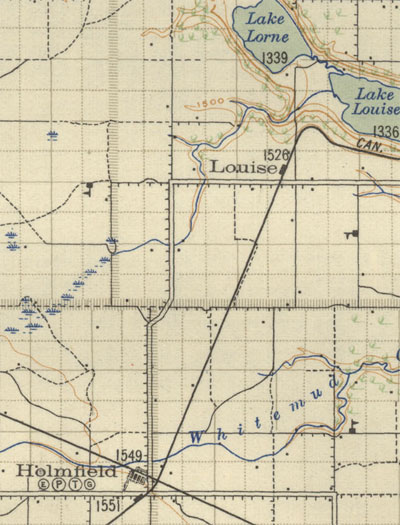 Unlike Greenway and Glenora, the next stop on the Wakopa Line, Holmfield, was already well established on the CPR. Work was rushed through with two miles of track being laid every day. Men were paid $1.75 a day and were charged $6.00 a week for board. It was a rare distinction for a small village to be served by two railways, bringing in mail and freight and providing two choices of routes to the city. The CN train service was tri-weekly at first. Both railways supplied freight and mail to the small settlement. The Harrison Bros built the first grain elevators in 1885. In 1897 they erected the grist mill. 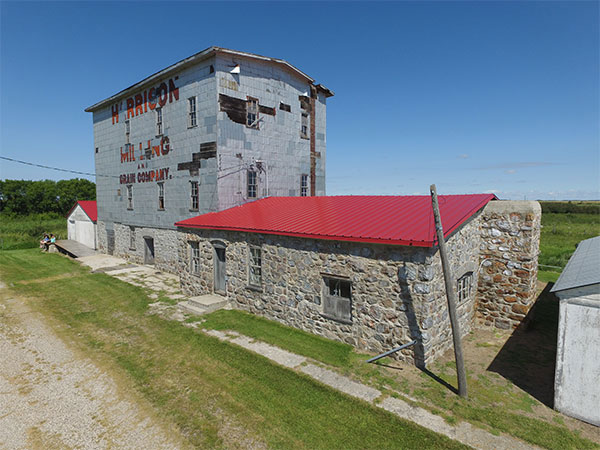 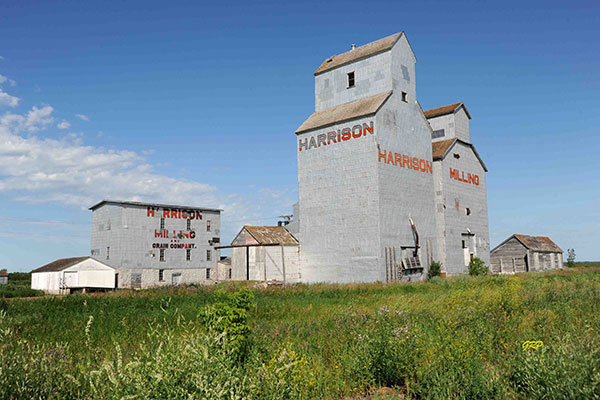 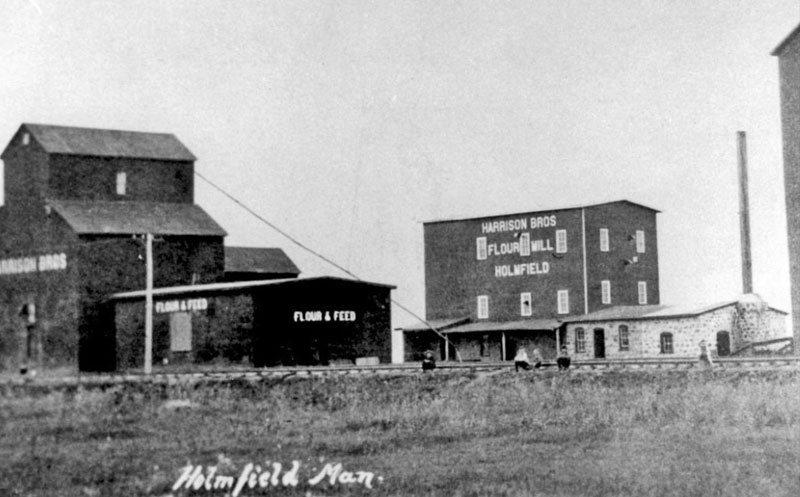 Federal Grain Limited built in 1928. They were moved after being sold to the Harrison Milling Company in the late 1940s. The mill remains the property of the Harrison family although it has not operated since the 1990s. Fire completely destroyed the CNR station in February, 1909. A station was rebuilt at a more convenient location to the south of the village.. Watchmen were hired to keep the junction of the two railways safe from collisions. The first watchman was Henry Coulter, who was followed by James Ager. William Jamieson built his residence at the crossing in 1906. He also served as watchman for many years. Mr. Huddlestone was the section foreman for the C.N .R. Other C.N .R. Section men were Ed Bennett, A. Gould, William Bell, John Nowosad, Mr. Hillier, Bill Watson, R. Beswitherick, Wm. Kerr Jr., Isaac Giesbrecht, Raymond Lyons, Keith Porter, Errol Mayers, and John Olson. The men who controlled the switches at the crossing of the C. N. R. and C.P .R. tracks were called diamond men. Some of these men were, Mr. Agar, Mr. Whiteside Sr., Mr. William Jamieson, Cliff Campbell, Cyril Wallis, Rod Brown, and Ted Spencer. Snow In 1907 the railways experienced severe problems with their trains stuck in snow drifts. The Neelin-Greenway prairie was three feet deep and the drifts were fifteen feet deep, with the temperature registering 45° below zero. The station men built high snow fences to prevent the snow from blocking the track. Cuts were so deep a light breeze would fill them up. It was a sight worth seeing to watch a couple of engines headed by a snow plow plunging through a drift two to six feet deep and two miles long. The engines threw snow out as high as a house. The trains always carried a large gang of men to dig out the train when it got stuck. 1949 was another year of unusually high snowfall. Four CNR engines and two snow plows were working between Holmfield and Lena and became stranded in drifts sixteen feet deep in spots. In addition to the three engines and a snow plow, there were three cabooses, three water cars, three coal cars, one official car, ten combination bunk and dining cars and one other snow plow unit. This line was thought to be the worst one in the country for snow and that year experienced its worst winter in history. In 1958 the last passenger train of the CPR passed through Holmfield and in 1961 the CNR abandoned the Wakopa-Greenway line. With the abandonment of the railways, a lot of businesses either folded or moved to other towns. 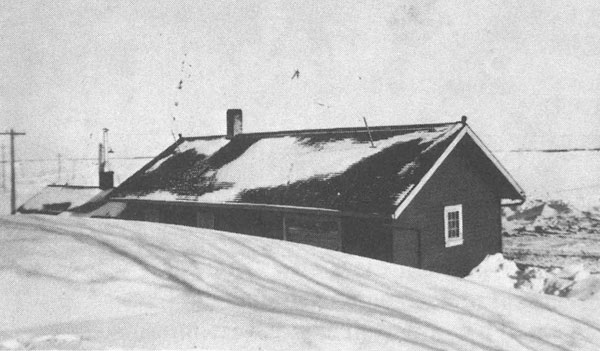 The CN Station, built in 1909, seen here in 1949 - the year of the snow. 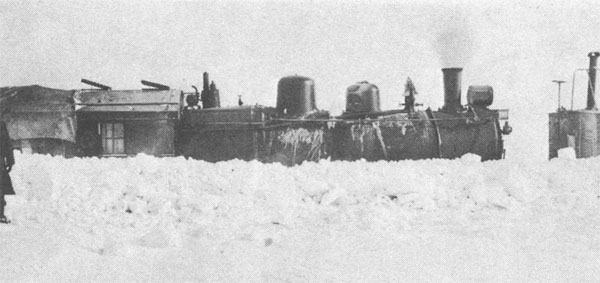 CN Train - 1949 (Holmfield History)
|
